
- Macro-photographer and naturalist Santosh Roy documents 40 families of moths at the IISER-TVM campus in Vithura taluk, in the Agasthyamalai hill range of Kerala.
- Primarily documenting moths of the families Erebidae, Geometridae, Crambidae, Limacodidae, and Lecithoceridae over two years, Roy finds that the region’s high moth diversity serves as an indicator of ecological health.
- By observing and documenting them, we not only learn more about their lives but also build a deeper appreciation for the fragile natural world around us, writes Roy in this commentary celebrating National Moth Week.
- The views in this commentary are that of the author.
The lush green Agasthyamalai hill range in the Western Ghats is home to an extraordinary variety of flora and fauna. This region, with its dense vegetation, year-round intermittent rainfall, intense sunlight, and high humidity, provides an ideal habitat that supports rich and diverse biodiversity.
As a macro-photographer and naturalist living on the Indian Institutes of Science Education and Research (IISER) Thiruvananthapuram campus, I find Vithura, where the campus is located, to be a fascinating environment. Each day brings new surprises and colourful encounters with the arthropods that thrive in this ecosystem.
Over the past two years, through daily observations, I have come to appreciate how integral moths are to this region. They serve as important indicators of ecological balance, playing vital roles in food webs and pollination cycles. Their diversity reflects the overall health of this pristine corner of Kerala.
So far, I have documented around 40 families of moths in the area. The most prominent among them include Erebidae, Geometridae, Crambidae, Limacodidae, and Lecithoceridae.
Moths are often found resting on dew-covered leaves during early mornings. At night, they gather beneath small leaves or around artificial lights, particularly near housing colonies. I frequently observe them circling street-lamps or quietly resting in wall corners.
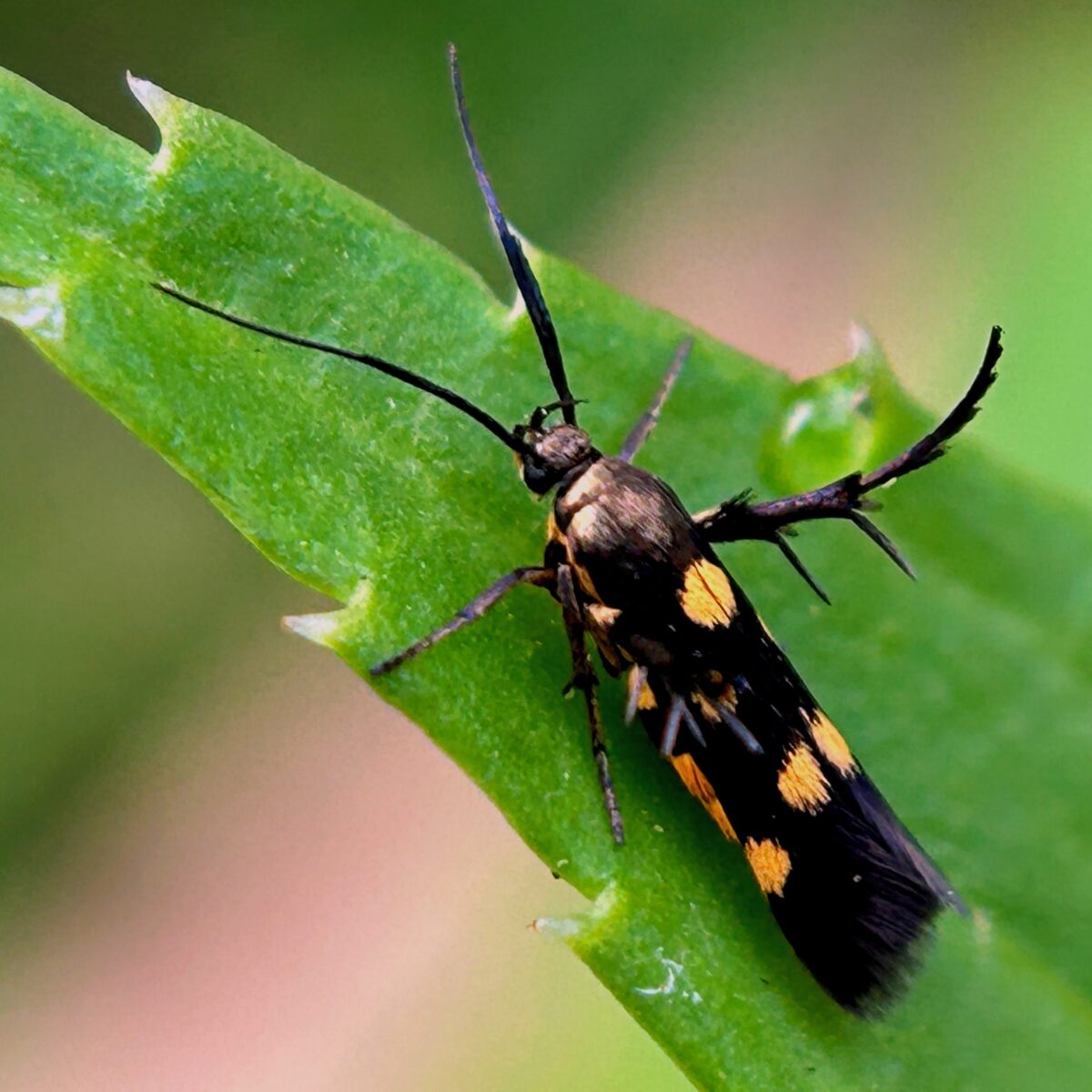
One of the most intriguing moths I’ve encountered is Eretmocera impactella, a member of the flower moth family Scythrididae. Despite its diminutive wingspan of just 1 cm, it is quite noticeable due to its vivid warning colours. The bright yellow spots on its wings often take on an orange hue during the monsoon. These moths are typically observed in mating pairs during daylight hours, nestled among the leaves. Interestingly, when paired, they closely resemble the more well-known Syntomoides imaon, the handmaiden moth — a diurnal species also common in this region.
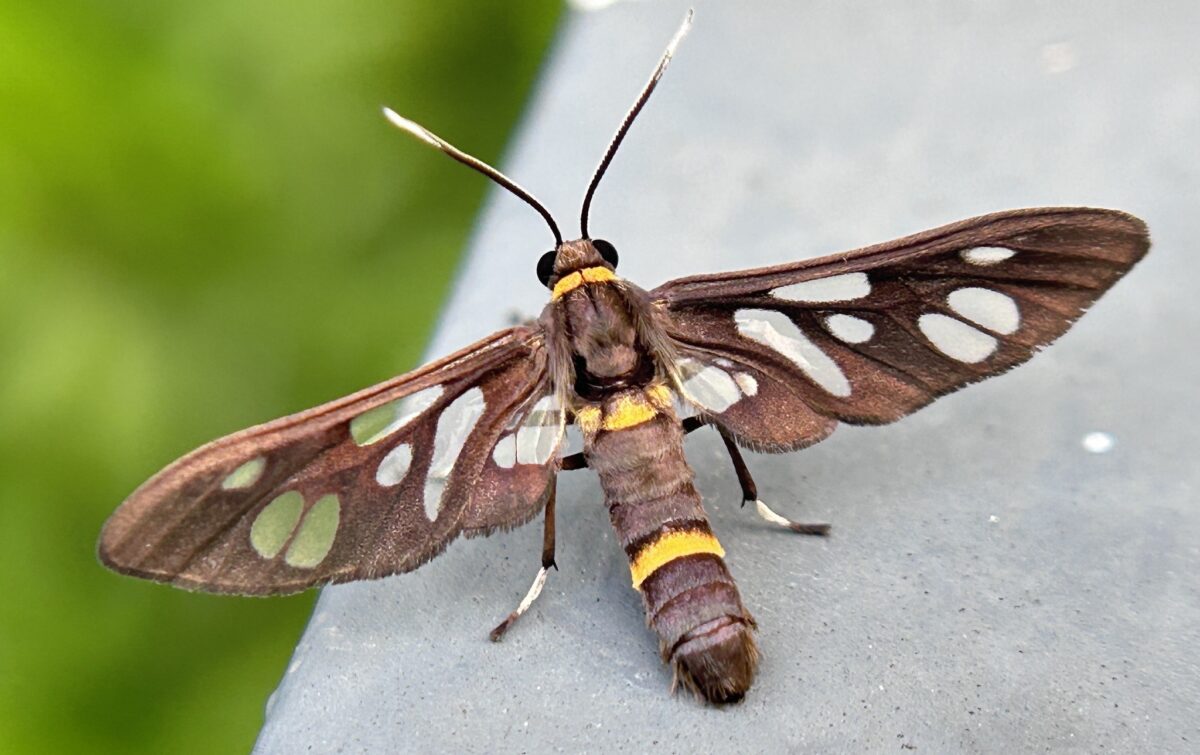
Syntomoides imaon is believed to be toxic to predators, thanks to its vivid aposematic colouration. Its bold patterns serve as a warning, deterring potential threats. This species has inspired mimicry in several others, including moths of the genera Amata and Eressa, which have evolved similar colouration to benefit from the protective camouflage.
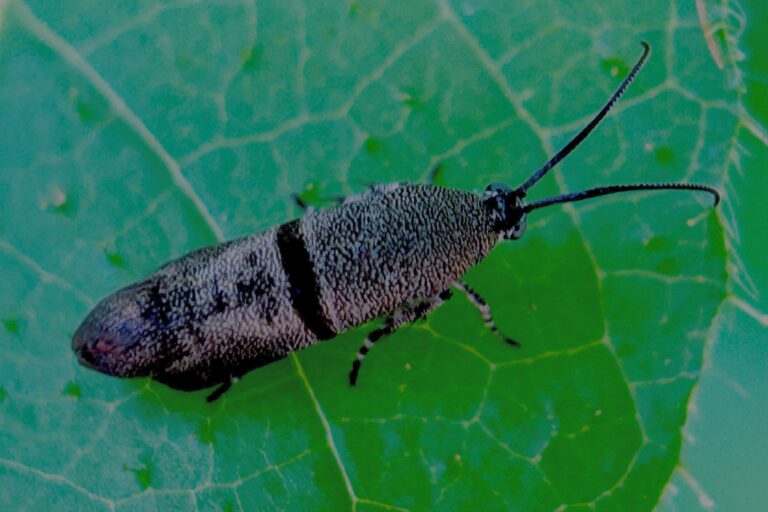
Another frequently overlooked moth is Phykodes minor or little bear moth, from the family Brachodidae. This tiny, grey-coloured moth measures about 1 cm in length and can easily be mistaken for a chunky leaf beetle due to its appearance. It has long antennae and a somewhat sluggish nature, rarely flying unless disturbed — likely a strategy for conserving energy. Interestingly, it also acts as a leaf roller and is often seen on Ficus species in the area.
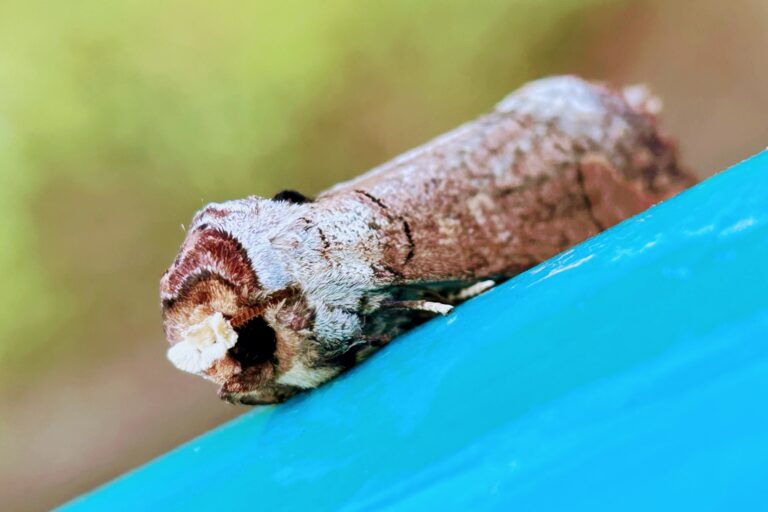
Phalera grotei, or Grote’s buff-tip moth, is another fascinating species that belongs to the family Notodontidae, commonly known as the prominent moths. This large moth is a master of camouflage, sporting a dull, woody colouration that mimics a broken twig. It is nocturnal and spends the day motionless and nearly invisible amidst foliage. Adults likely do not feed and instead live only for roughly one week — just long enough to reproduce.
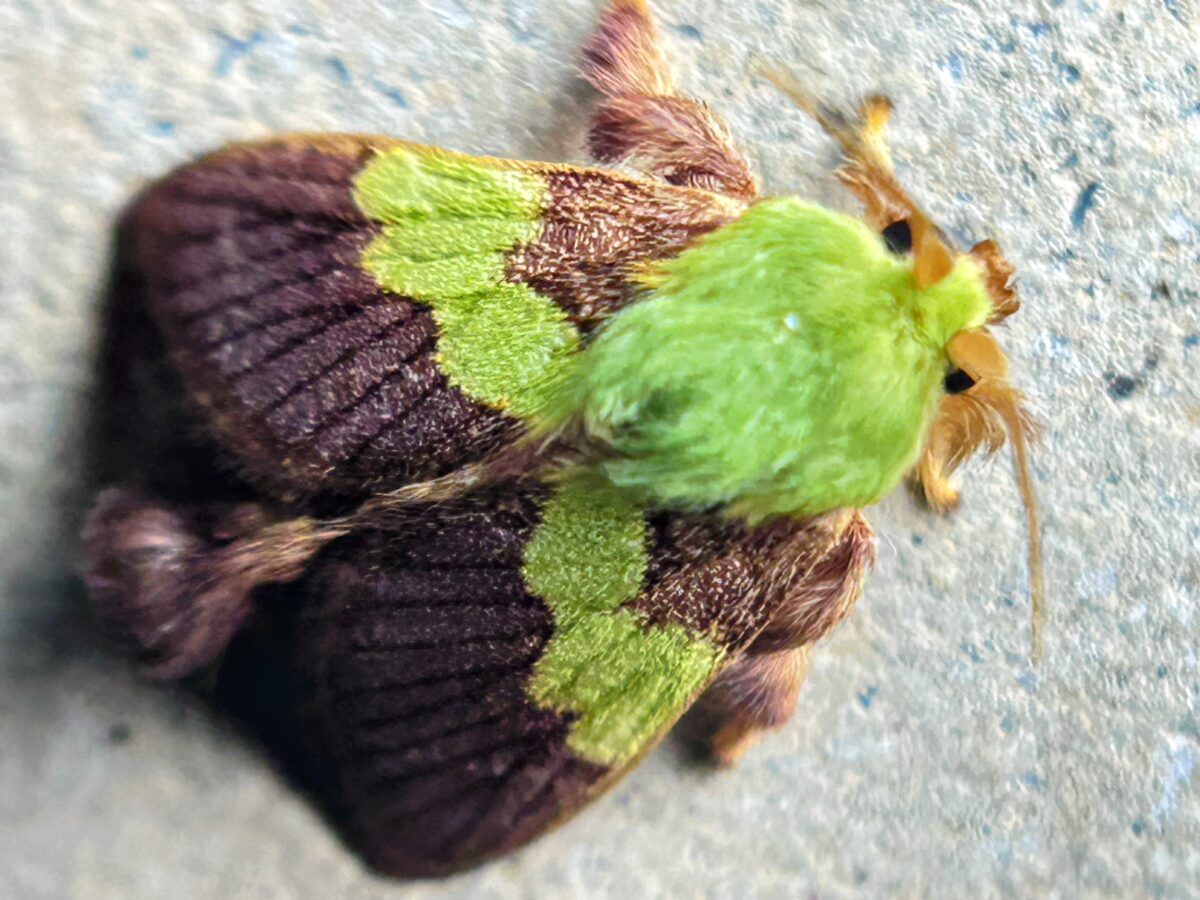
The caterpillars of the slug-caterpillar moths (Limacodidae) are some of the most visually striking among local species. While the caterpillars are colourful and ornate, often appearing like animated jewels, the adult moths are more subdued in their appearance, typically sporting dark and earthy tones. The name “slug-caterpillar moths” comes from the caterpillars’ unique movement — they glide like slugs, lacking the usual prolegs found in most larvae. Instead, they use ventral suckers to move. These caterpillars are well-defended, equipped with fine needle-like structures that can inject toxins when touched.
Species like Miresa sp. are often seen early in the morning, resting low among tall grasses. Their robust, hairy bodies and rich colouration make them an interesting subject for photography and observation.
Another visually captivating species is Aergina hilaris. Its body blends green and brown tones, providing excellent camouflage in foliage. However, it stands out vividly when resting on pale or white surfaces, revealing its contrasting colours.
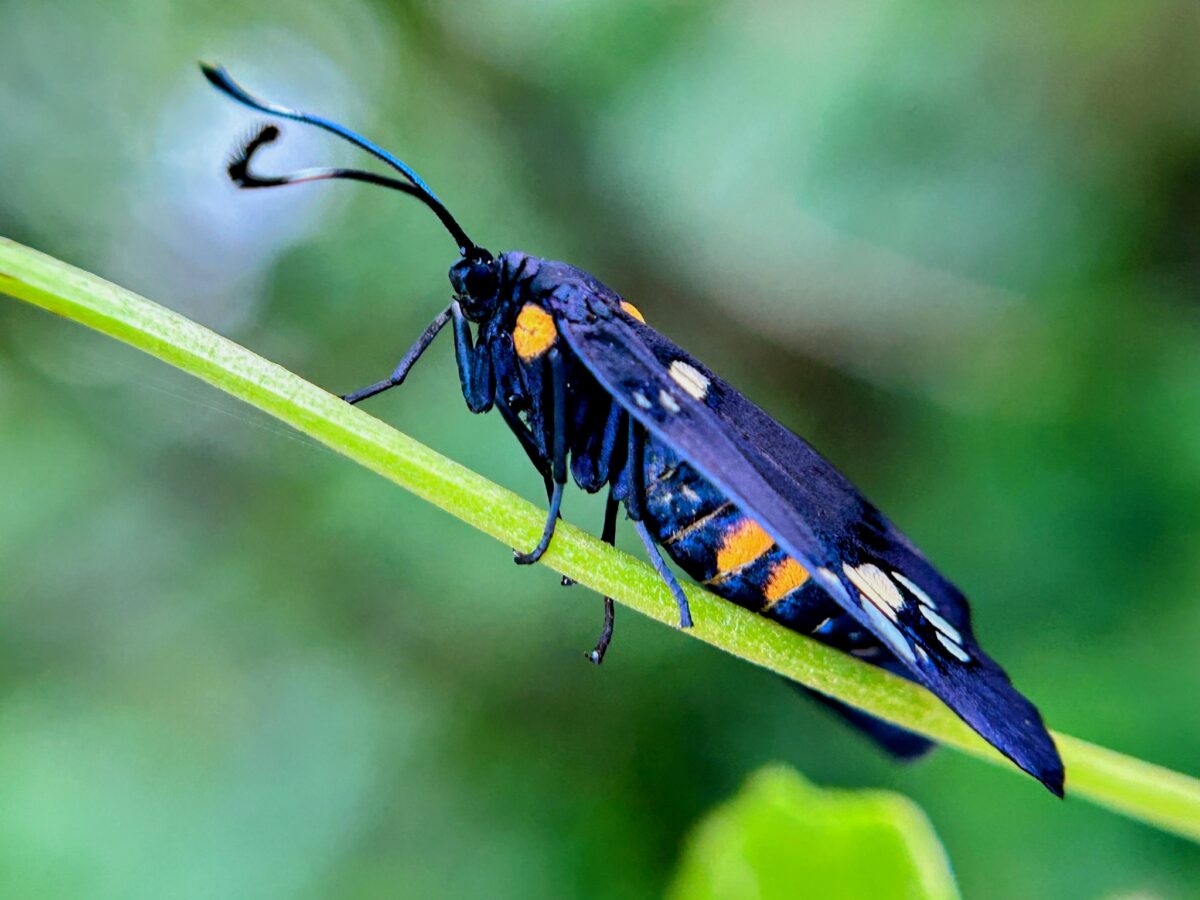
Among the rarer sightings are moths from the family Zygaenidae. These moths, including species of the genus Trypanophora, exhibit stunning metallic hues — typically dark blues and blacks accented with red or yellow warning colours. These striking colours are more than decorative; they signal toxicity. Trypanophora moths contain hydrogen cyanide (HCN), either synthesised internally or derived from the plants they feed on. This chemical defense renders them unpalatable to predators.
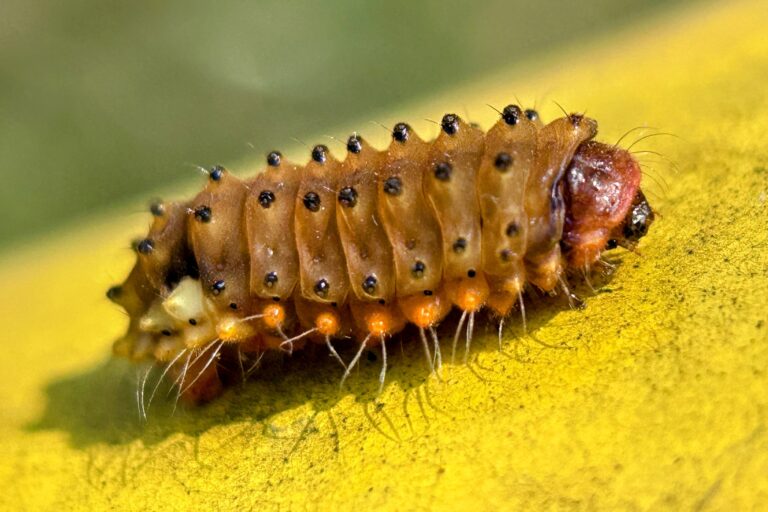
Trypanophora caterpillars are just as distinctive, often covered in spiny tubercles and found on various host plants. Adults are sometimes spotted near the IISER Thiruvananthapuram campus, though they remain elusive and rare.
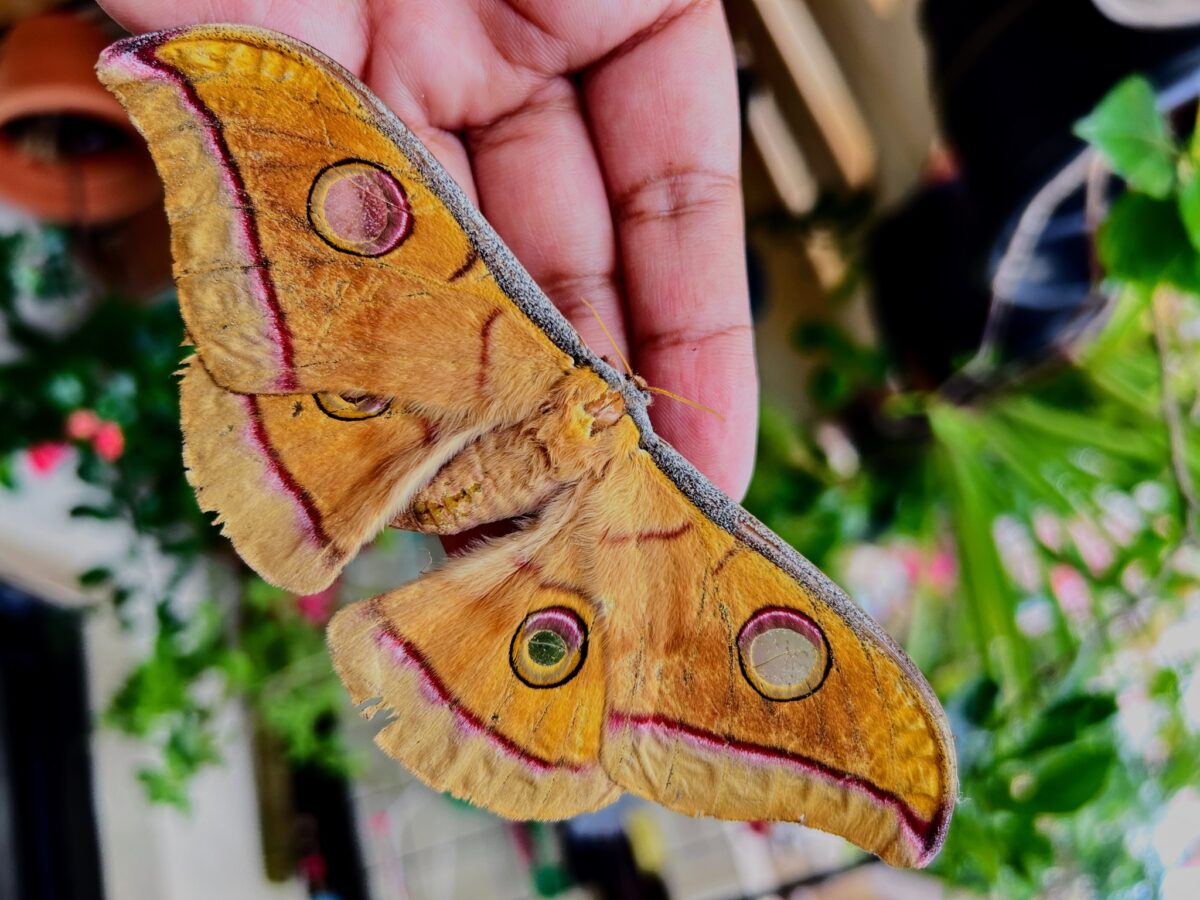
One of the most magnificent moths I’ve had the fortune to encounter is the tussar silk moth (Antheraea paphia), a member of the family Saturniidae. With a wingspan exceeding 15 cm, it is among the largest moths in the region. On one memorable occasion, a female emerged from the nearby forest and, exhausted, found refuge on my hand. She remained still, allowing me to capture her beauty up close. Her wings displayed large transparent eyespots encircled in pink — a feature both stunning and evolutionarily functional, likely serving to deter predators.
This species plays an important role in India’s wild silk industry, known for producing tussar silk, a coarse but durable and beautiful fibre used in traditional textiles.
This is only a glimpse into the moth diversity of Vithura taluk. Each species, whether common or rare, contributes to the intricate ecological web that thrives in the Western Ghats. By observing and documenting them, we not only learn more about their lives but also build a deeper appreciation for the fragile natural world around us.
Read more: What’s killing the buzz? A look into urban fumigation
Banner image: A Trypanophora sp. moth seen near Kolkata. Representative image by Santosh Roy.
































































































































































































































































































































































































































